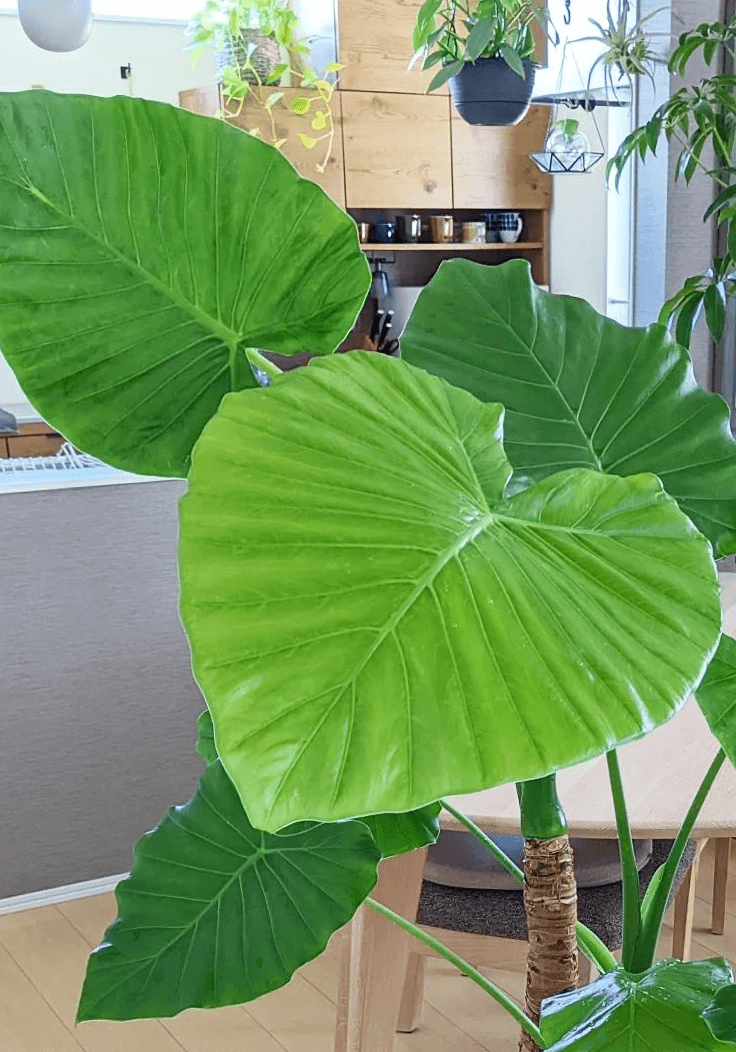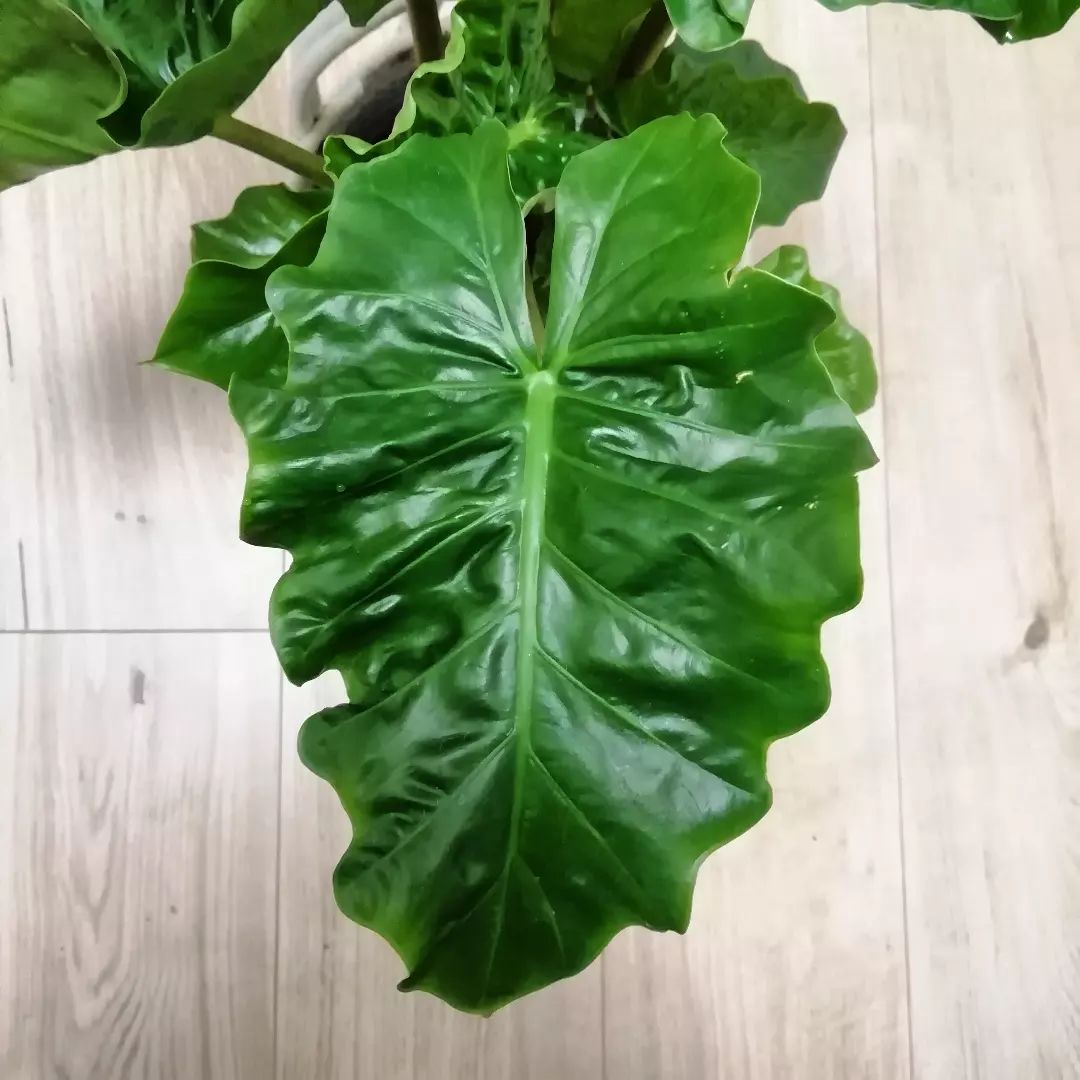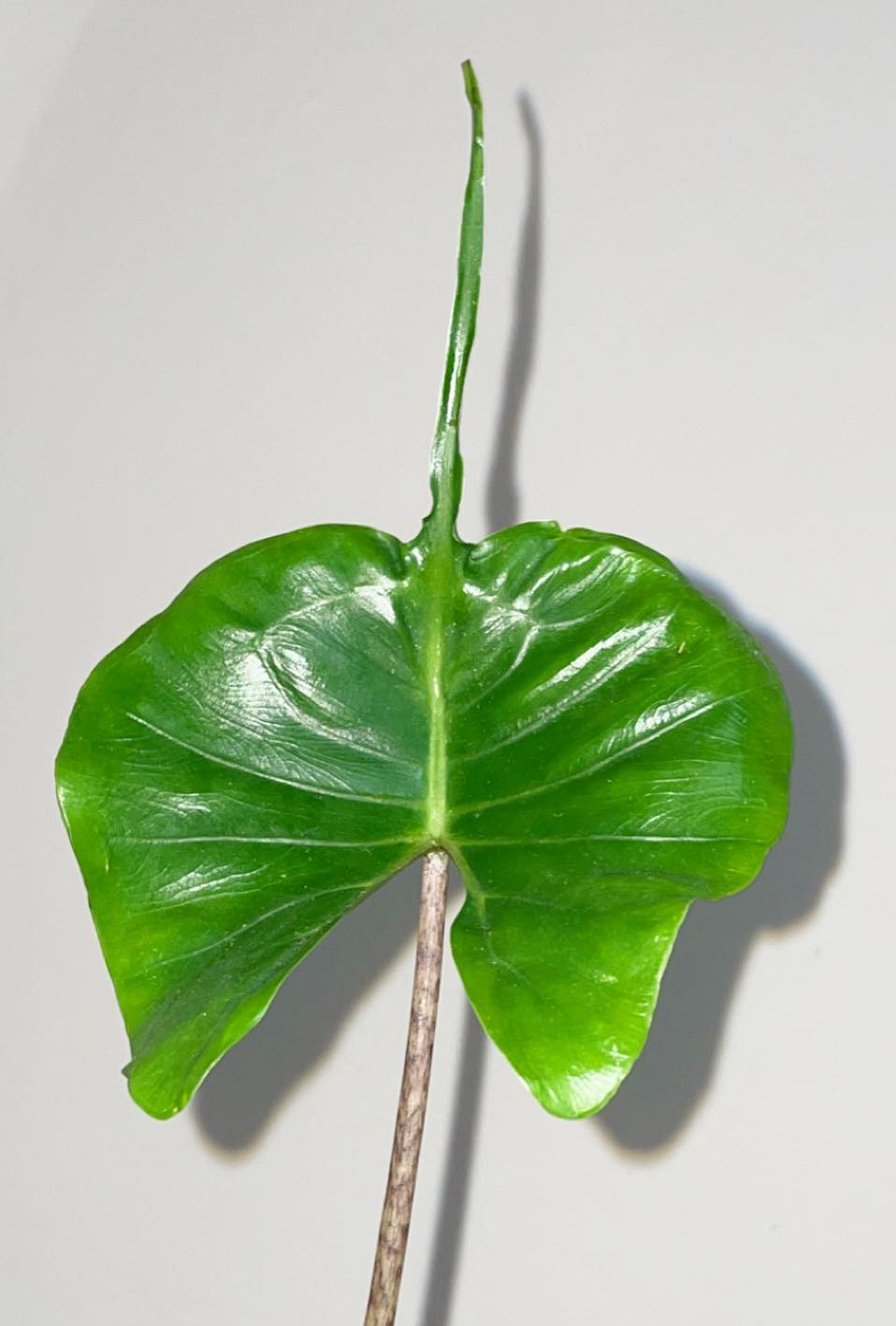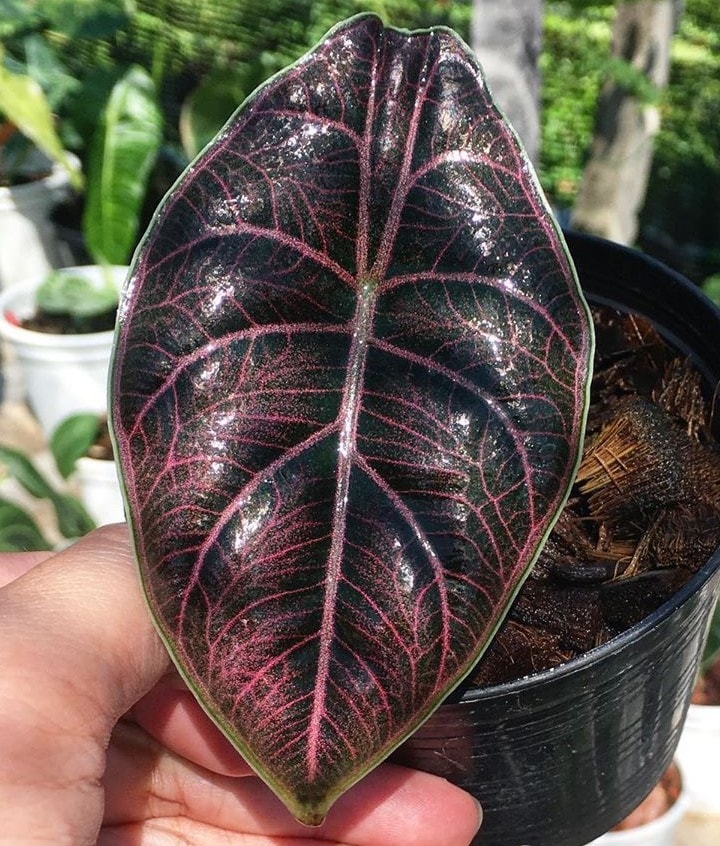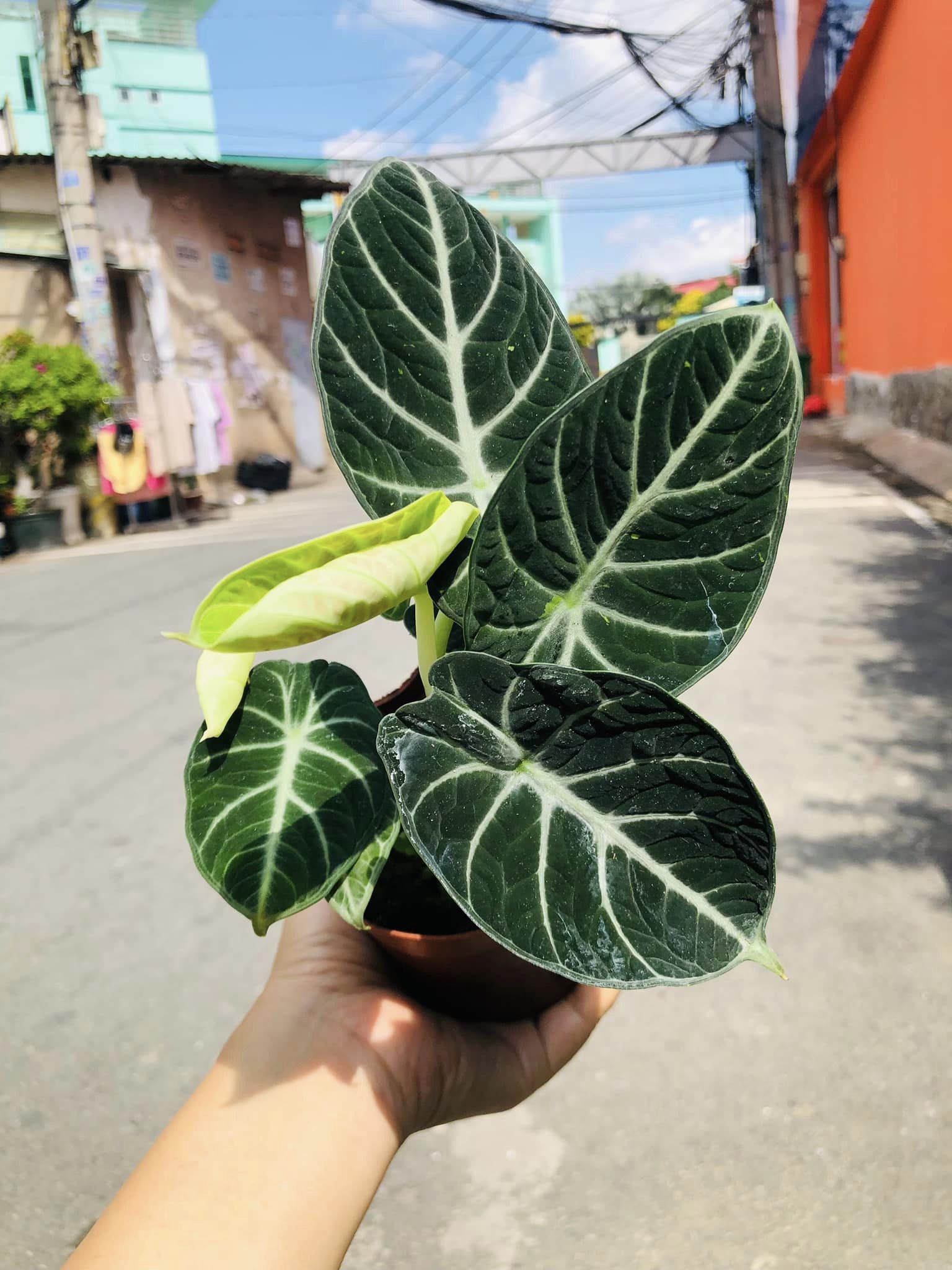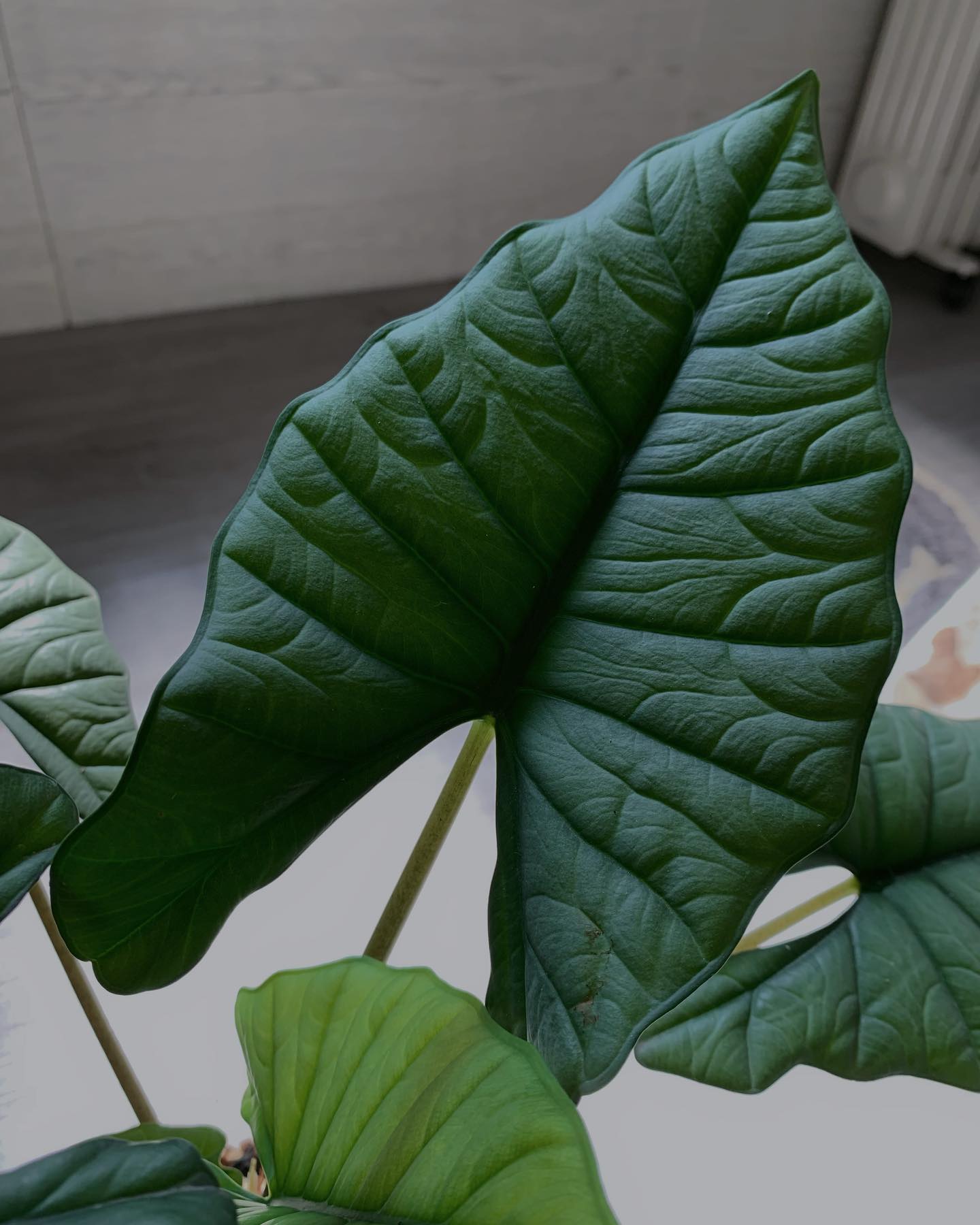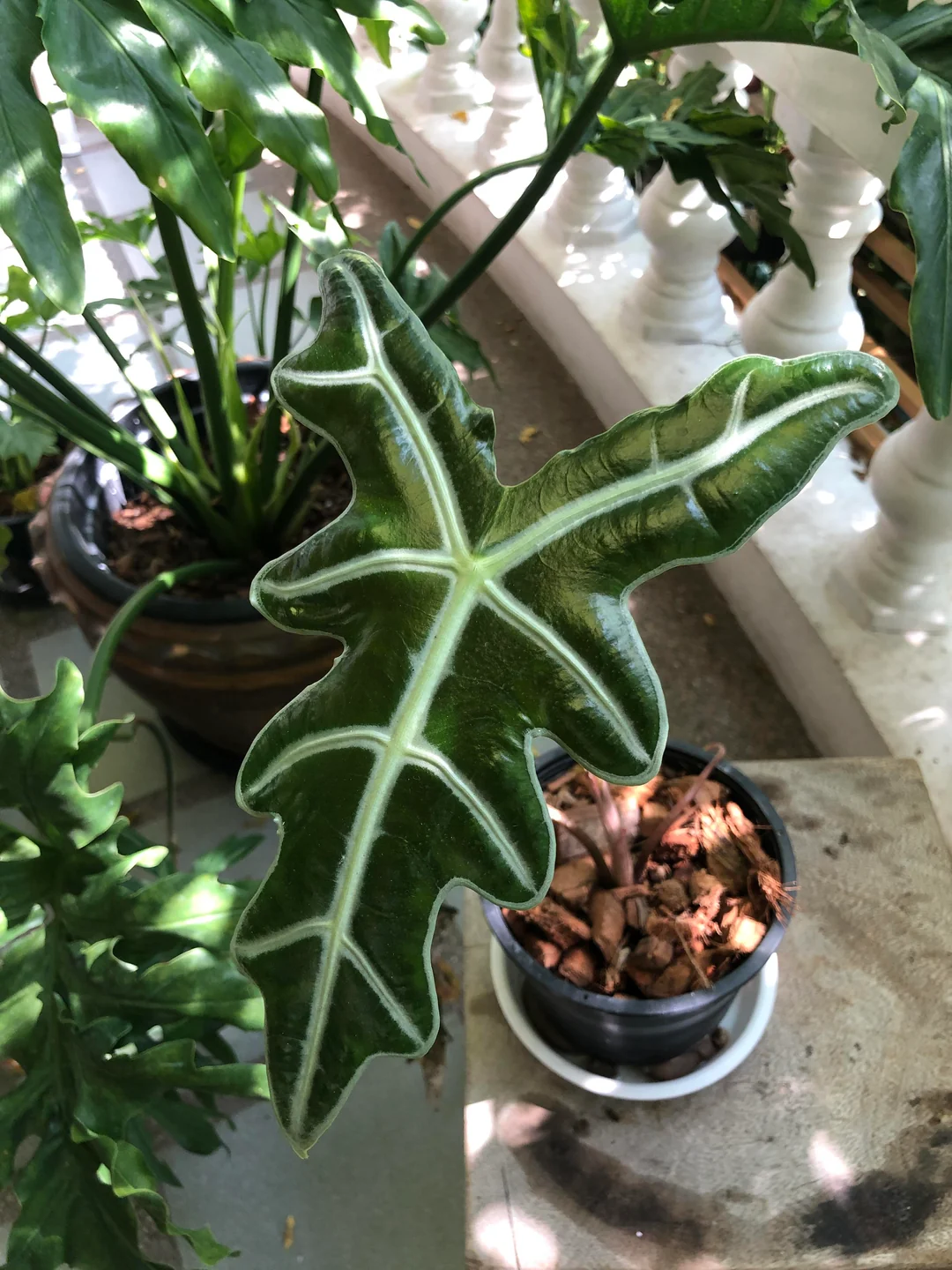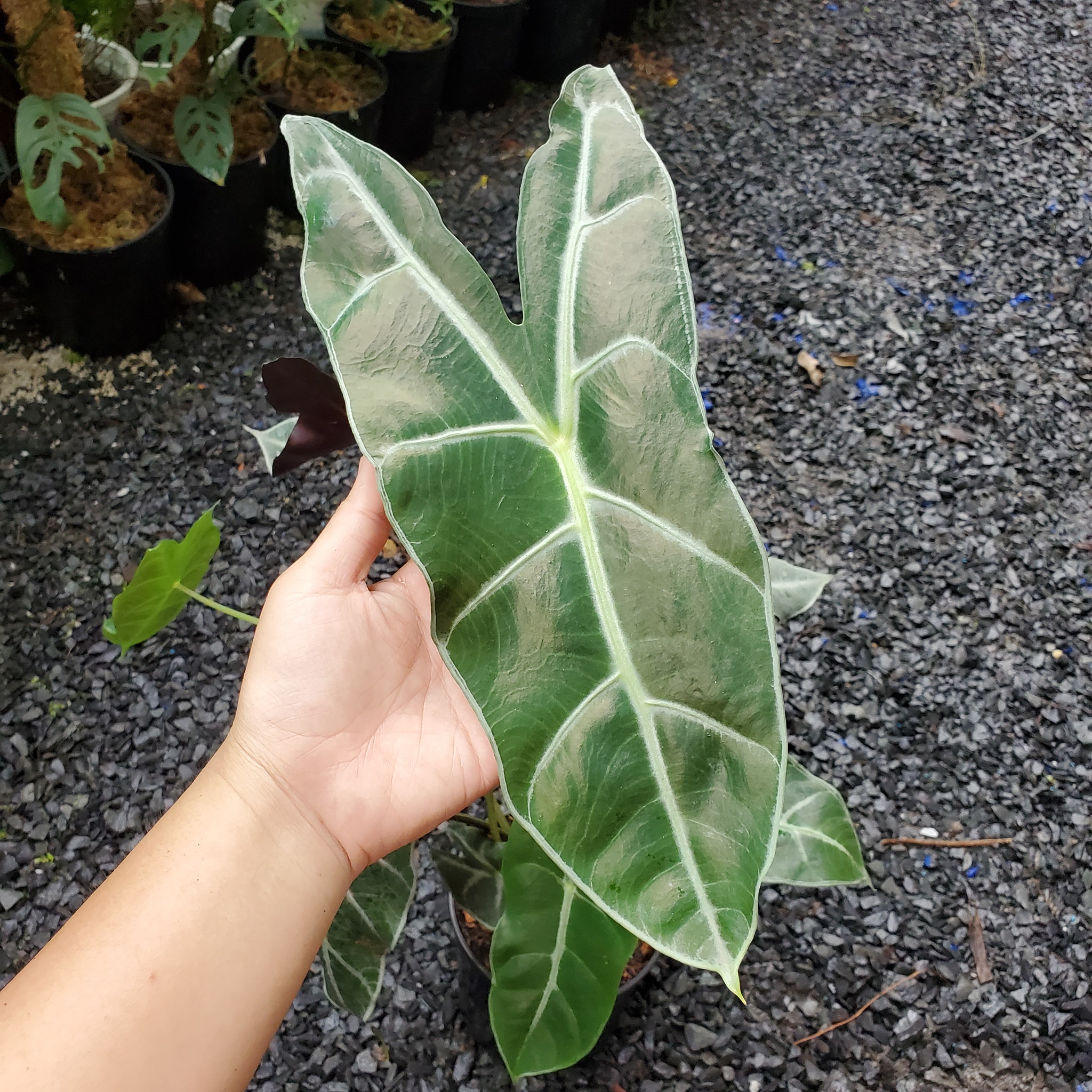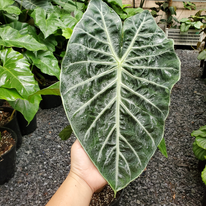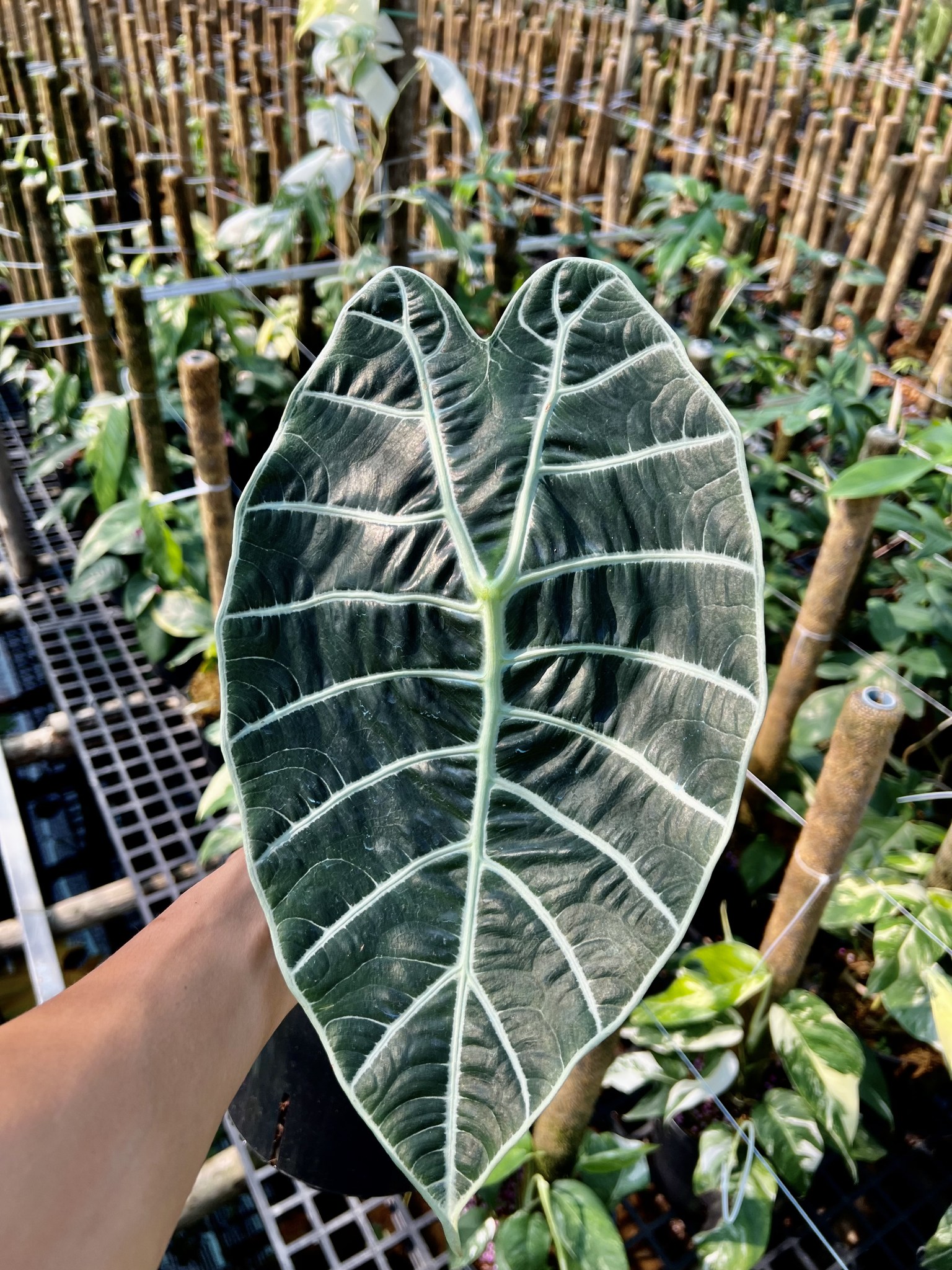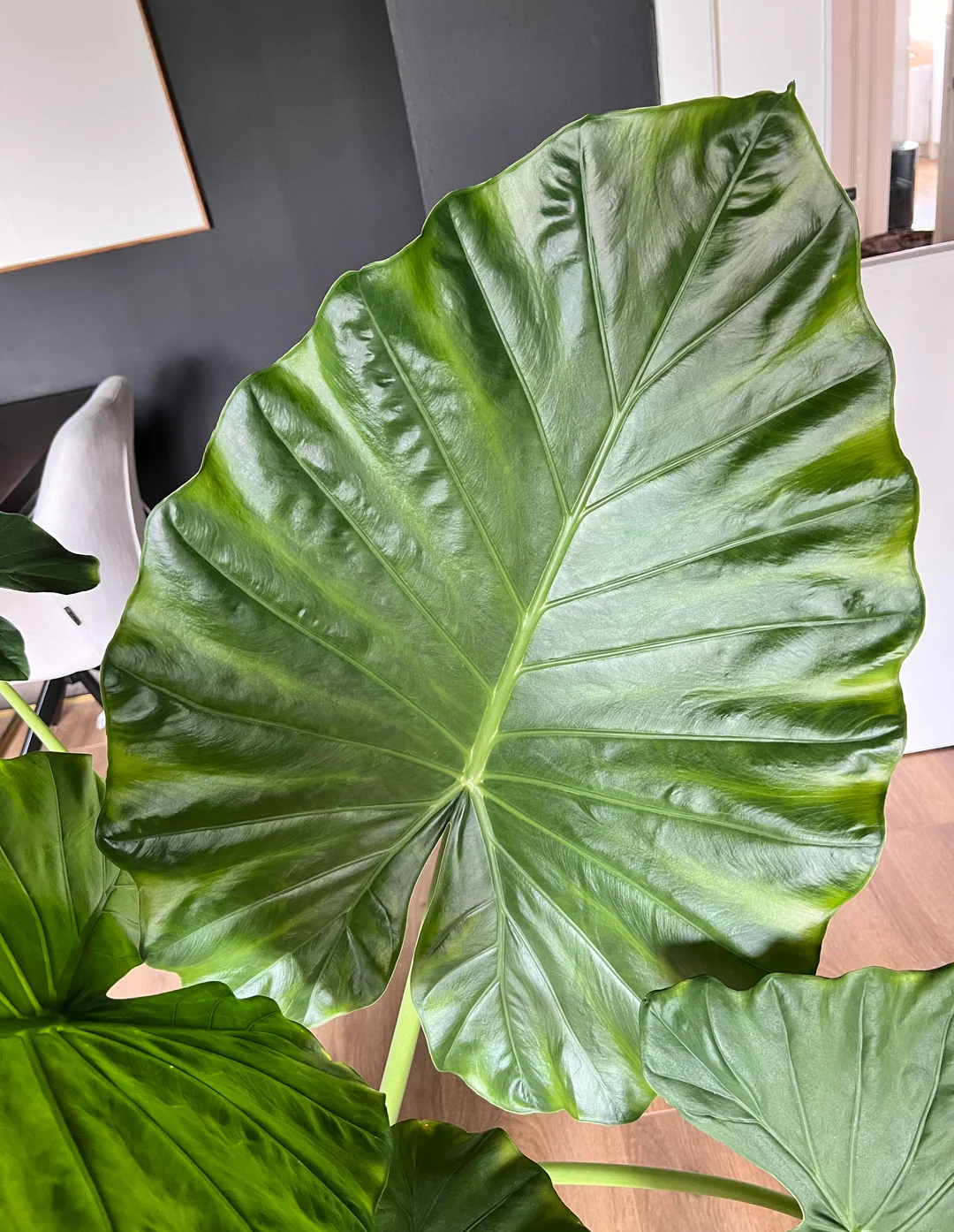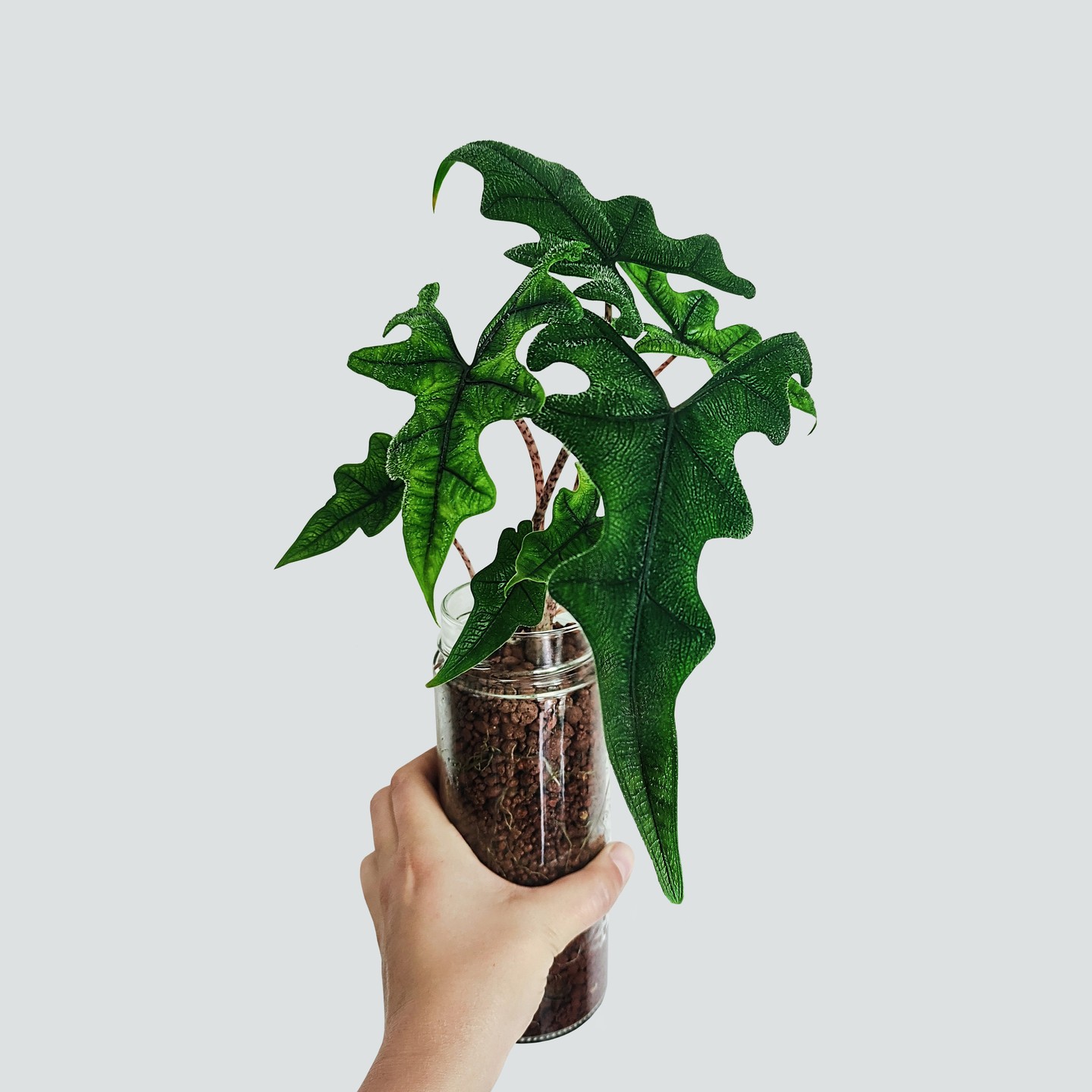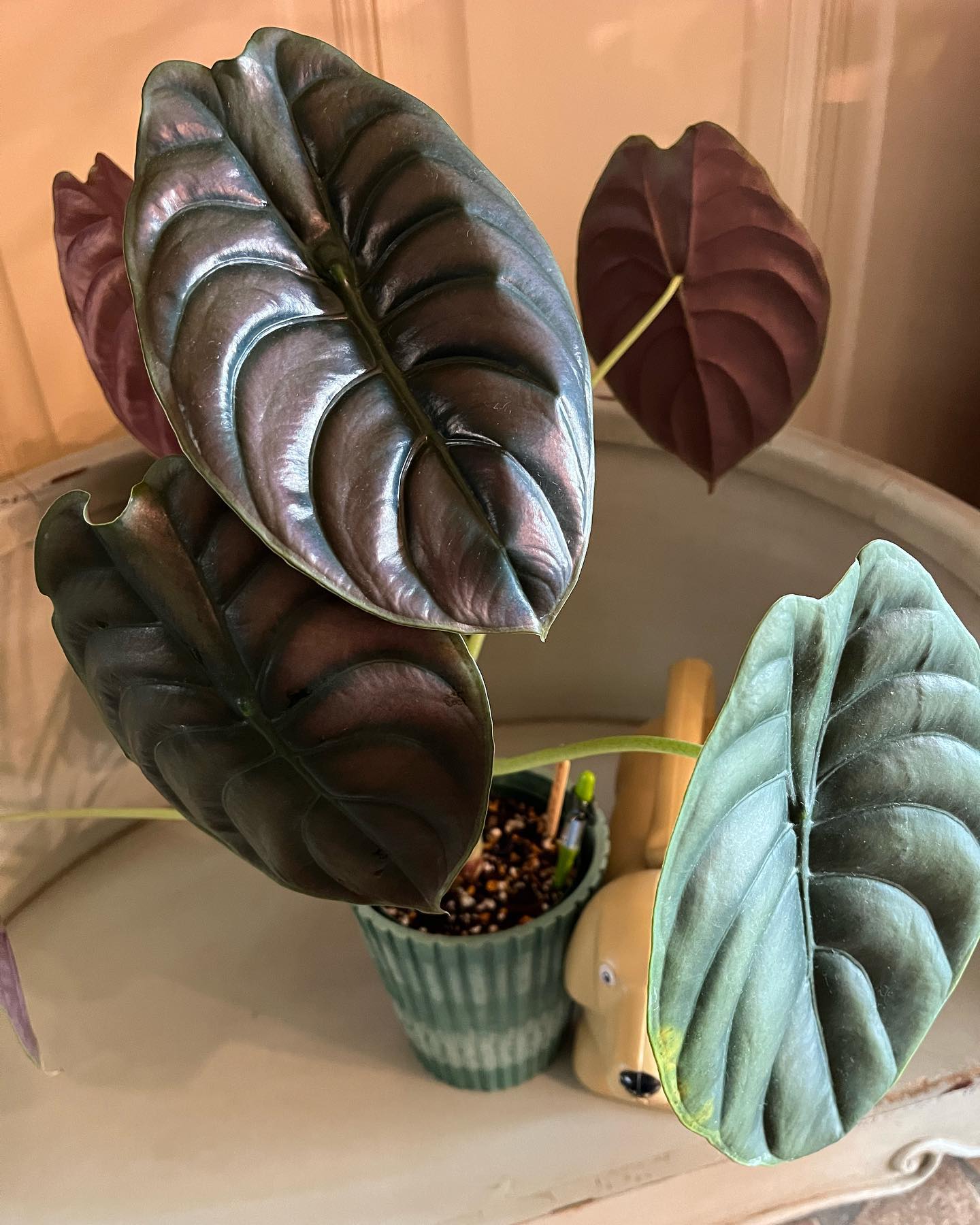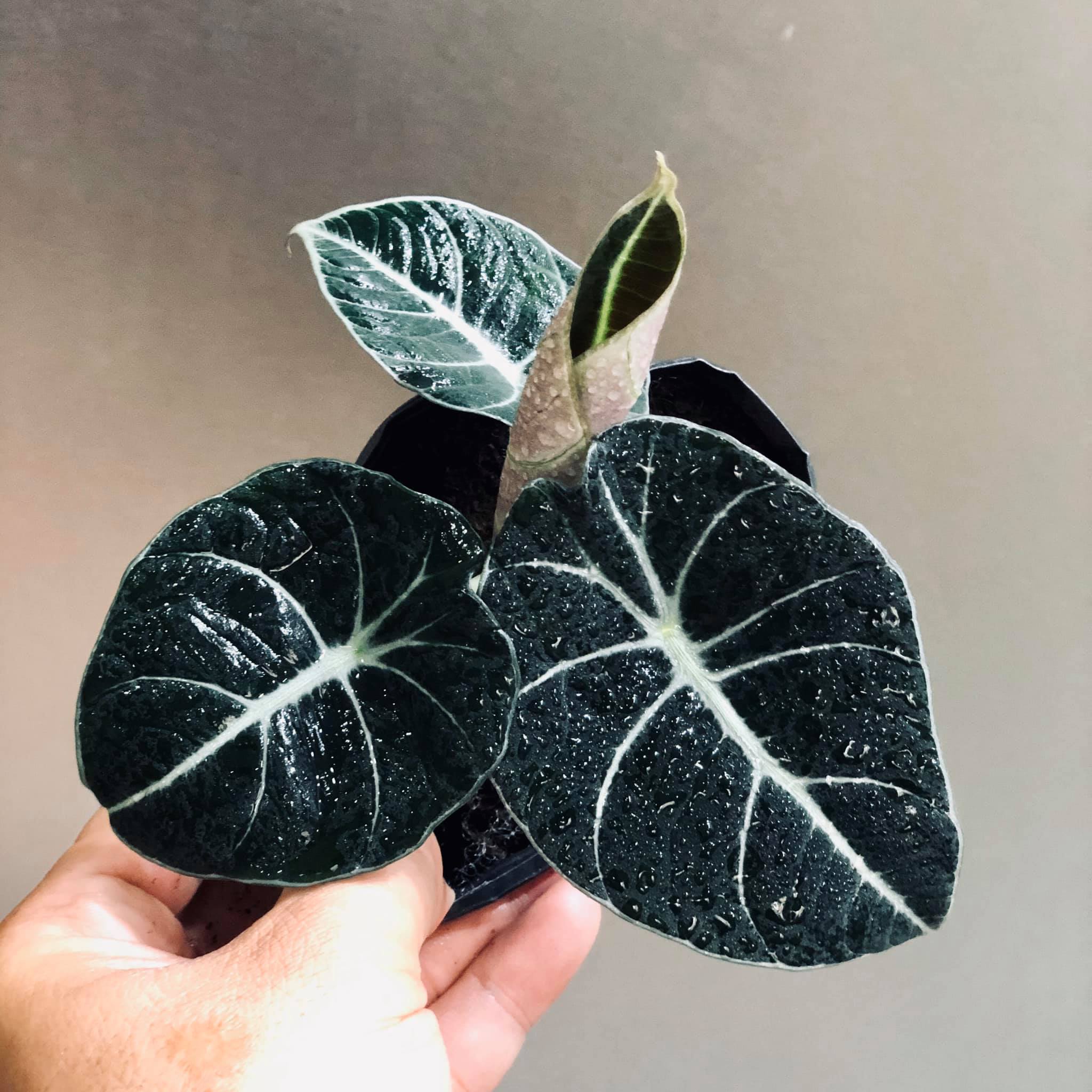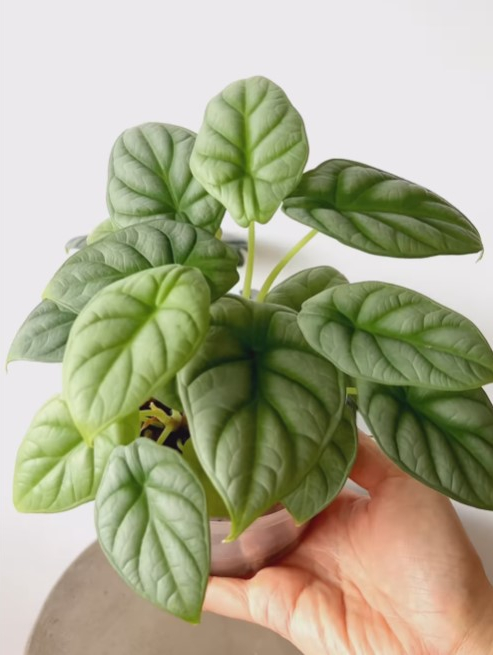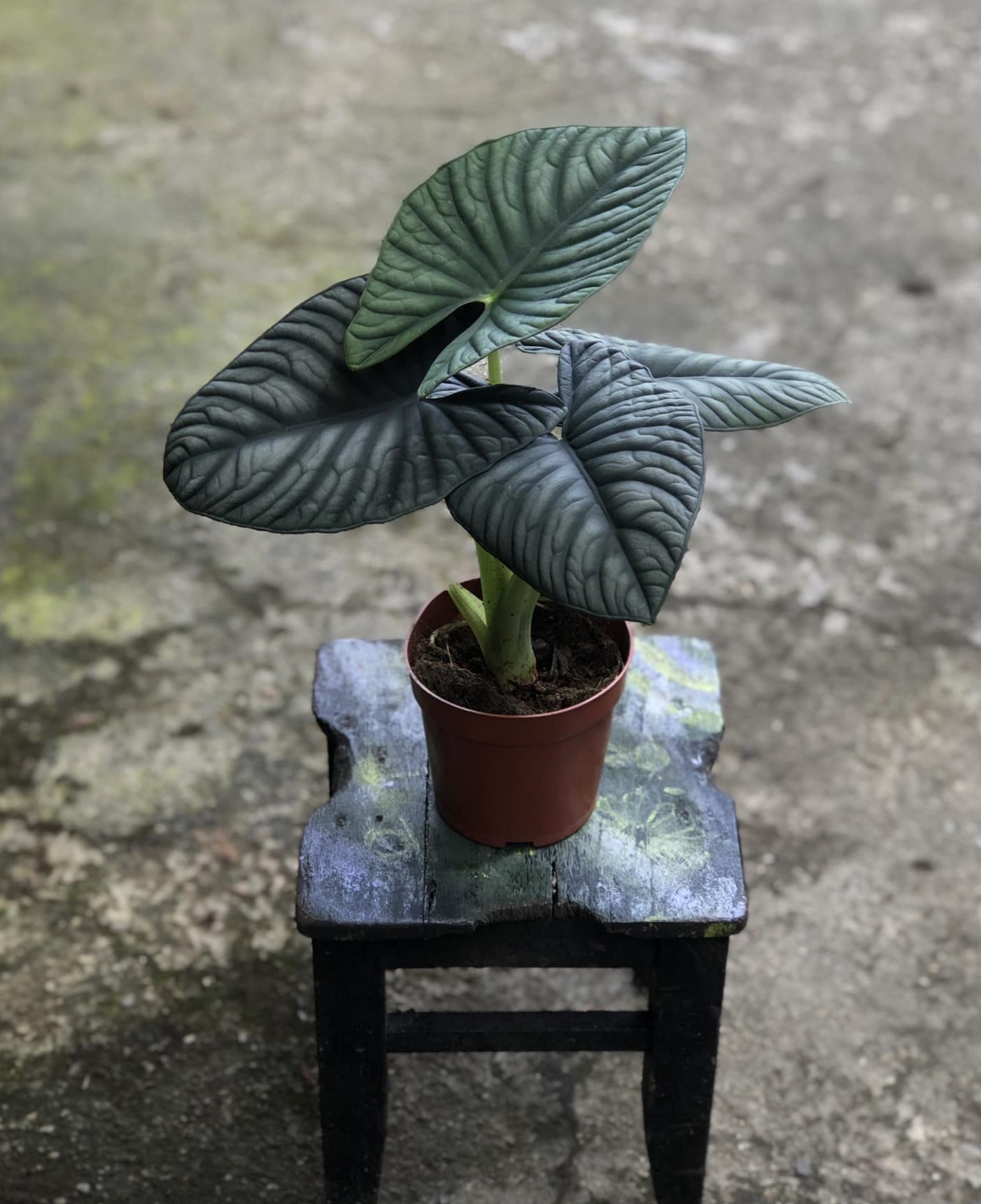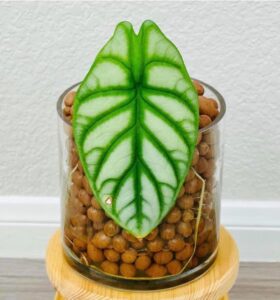
In a nutshell, Alocasia and LECA are a match made in heaven. My Alocasia plants have flourished in LECA, sprouting new leaves that keep getting larger.
They’re super easy to switch to semi-hydroponics, thanks to their love for root growth and humidity.
The LECA community agrees—Alocasia rarely disappoints.
In this post, I’ve included insights from my pals Alison and Michelle. Want to share your experience? Don’t hesitate to make a comment below!
All Alocasia Care Guides
Semi-Hydro Potting Configuration
Alocasia may shed some old leaves, but you can minimize this with a Nutrient Stagnant Wicking (NSW) setup. I recently moved two Alocasia Cupreas to semi-hydroponics. Both plants get the same light, humidity, and temperature in the Greenhouse Cabinet. One is in an NSW setup, the other in a submerged setup. The NSW one is thriving.
Read more: Semi-hydroponic Potting Setups
Most of my Alocasias are also in the NSW setup, with a few in submerged setups for testing.
I also use a homemade pon and LECA blend in her NSW setup for her Black Velvet Alocasia.
Easy Transition & Root Care
Alocasia roots shake off soil effortlessly, making them ideal for your first LECA transition.
The roots are thick and sprout smaller root hairs. These roots love being in direct contact with water in the reservoir.
If some root hairs start to rot, you can easily remove them, especially if you’re using an NSW setup. We all maintain a water reservoir during the transition because Alocasias are water enthusiasts.
Fertilizing / Nutrient for Alocasia
You can feeds Alocasias with a nutrient mix that totals around 800-1000ppm. You can start with RO water, add a cocktail of nutrients, and follow the RapidStart dilution guidelines.
Alison prefers FoliagePro, using half a teaspoon per gallon.
For the full guide, take a look at our Alocasia Nutrient Guide.
Temperature & Humidity
Alocasias are easily adaptable.
I usually tend to keep my Alocasia in a greenhouse cabinet initially, then move them to a spot in her home.
If you don’t have a greenhouse, a large, clear container works for added humidity. Currently, my house maintains a temperature of 70-75°F and 20-40% humidity. Grouping plants can also boost humidity.
Long-Term Upkeep
It’s recommended to keep a steady water reservoir for your Alocasias. My Alocasia Silver Dragon likes to dry out a bit. Generally, they like consistent moisture.
If they stay wet, you’ll notice more water droplets on the leaves. As your Alocasia grows, the tips are less likely to brown.
I flush the system occasionally.
So there you have it! Alocasias love LECA and are easy to care for. Got questions or want to contribute? Feel free to reach out!




